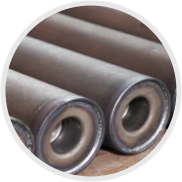 Afrikaans
Afrikaans  Albanian
Albanian  Amharic
Amharic  Arabic
Arabic  Armenian
Armenian  Azerbaijani
Azerbaijani  Basque
Basque  Belarusian
Belarusian  Bengali
Bengali  Bosnian
Bosnian  Bulgarian
Bulgarian  Catalan
Catalan  Cebuano
Cebuano  Corsican
Corsican  Croatian
Croatian  Czech
Czech  Danish
Danish  Dutch
Dutch  English
English  Esperanto
Esperanto  Estonian
Estonian  Finnish
Finnish  French
French  Frisian
Frisian  Galician
Galician  Georgian
Georgian  German
German  Greek
Greek  Gujarati
Gujarati  Haitian Creole
Haitian Creole  hausa
hausa  hawaiian
hawaiian  Hebrew
Hebrew  Hindi
Hindi  Miao
Miao  Hungarian
Hungarian  Icelandic
Icelandic  igbo
igbo  Indonesian
Indonesian  irish
irish  Italian
Italian  Japanese
Japanese  Javanese
Javanese  Kannada
Kannada  kazakh
kazakh  Khmer
Khmer  Rwandese
Rwandese  Korean
Korean  Kurdish
Kurdish  Kyrgyz
Kyrgyz  Lao
Lao  Latin
Latin  Latvian
Latvian  Lithuanian
Lithuanian  Luxembourgish
Luxembourgish  Macedonian
Macedonian  Malgashi
Malgashi  Malay
Malay  Malayalam
Malayalam  Maltese
Maltese  Maori
Maori  Marathi
Marathi  Mongolian
Mongolian  Myanmar
Myanmar  Nepali
Nepali  Norwegian
Norwegian  Norwegian
Norwegian  Occitan
Occitan  Pashto
Pashto  Persian
Persian  Polish
Polish  Portuguese
Portuguese  Punjabi
Punjabi  Romanian
Romanian  Russian
Russian  Samoan
Samoan  Scottish Gaelic
Scottish Gaelic  Serbian
Serbian  Sesotho
Sesotho  Shona
Shona  Sindhi
Sindhi  Sinhala
Sinhala  Slovak
Slovak  Slovenian
Slovenian  Somali
Somali  Spanish
Spanish  Sundanese
Sundanese  Swahili
Swahili  Swedish
Swedish  Tagalog
Tagalog  Tajik
Tajik  Tamil
Tamil  Tatar
Tatar  Telugu
Telugu  Thai
Thai  Turkish
Turkish  Turkmen
Turkmen  Ukrainian
Ukrainian  Urdu
Urdu  Uighur
Uighur  Uzbek
Uzbek  Vietnamese
Vietnamese  Welsh
Welsh  Bantu
Bantu  Yiddish
Yiddish  Yoruba
Yoruba  Zulu
Zulu Application of Snub Pulley in Enhancing Belt Conveyor Efficiency and Performance
The Use of Snub Pulleys in Belt Conveyors
Belt conveyors are an integral part of various industries, ranging from manufacturing to mining. They are essential for transporting materials efficiently and reliably. One key component used in the design of belt conveyors is the snub pulley. This article discusses the significance of snub pulleys in belt conveyor systems, their function, advantages, and considerations for their use.
What is a Snub Pulley?
A snub pulley is a type of pulley used in belt conveyors that serves to increase the wrap angle of the conveyor belt around the drive pulley. Typically positioned just before the drive pulley, the snub pulley enhances the frictional contact between the belt and the drive pulley, which in turn improves the belt's gripping capacity and reduces slippage. The increased wrap angle allows for better power transmission from the drive to the belt.
Function and Importance of Snub Pulleys
The primary function of a snub pulley is to modify the angle at which the conveyor belt engages the drive pulley. In simple terms, it ensures that the belt has more surface area in contact with the drive pulley, which is crucial for effective power transmission. This is particularly important in applications where the conveyor system needs to handle heavy loads or operate on inclines.
Moreover, snub pulleys help in tensioning the belting system. Adequate tension is essential for the proper operation of the conveyor belt. If the belt is too loose, it can lead to slippage and increased wear on both the belt and the drive components. Conversely, if it is too tight, it can cause excessive stress on the bearings and other components, leading to premature failure. A snub pulley helps maintain the correct tension, promoting the longevity and efficiency of the conveyor system.
Advantages of Using Snub Pulleys
1. Enhanced Performance By increasing the wrap angle of the belt around the drive pulley, snub pulleys improve the transfer of power, resulting in better overall performance and efficiency of the conveyor system.
2. Reduced Slippage The increased contact area helps minimize slippage issues, ensuring that the material being transported moves steadily and reliably.
3. Better Load Handling Snub pulleys allow conveyors to handle heavier loads, making them particularly useful in industries such as mining or heavy manufacturing, where the materials are bulkier or more substantial.
use of snub pulley in belt conveyor

5. Versatility Snub pulleys are versatile and can be utilized in various types of conveyor configurations, whether they are horizontal, inclined, or declined.
Considerations for Implementing Snub Pulleys
While snub pulleys offer numerous benefits, there are some considerations to keep in mind during implementation.
1. Design Requirements The placement and size of the snub pulley must be carefully designed based on the specific conveyor system, including its dimensions, the weight of the materials being transported, and the power of the drive motor.
2. Maintenance Regular inspection and maintenance of the snub pulley are crucial for ensuring its performance and longevity. Bearings and the pulley surface should be checked periodically for wear and tear.
3. Alignment Proper alignment between the snub pulley and the drive pulley must be maintained to prevent uneven wear and to ensure effective power transmission.
4. Material Selection The material used for manufacturing the snub pulley should be compatible with the material being transported, as this can affect the wear rate of the pulley and ultimately the efficiency of the conveyor system.
Conclusion
Snub pulleys play a vital role in the performance and efficiency of belt conveyors. By enhancing the wrap angle of the conveyor belt, they improve power transmission, reduce slippage, and contribute to better load handling capabilities. As industries continue to evolve and require more efficient material handling solutions, the use of snub pulleys will remain crucial in optimizing conveyor systems for a variety of applications. Proper implementation and maintenance of snub pulleys will ensure that they contribute positively to overall operational efficiency, reducing downtime and enhancing productivity in any material handling operation.
-
Revolutionizing Conveyor Reliability with Advanced Rubber Lagging PulleysNewsJul.22,2025
-
Powering Precision and Durability with Expert Manufacturers of Conveyor ComponentsNewsJul.22,2025
-
Optimizing Conveyor Systems with Advanced Conveyor AccessoriesNewsJul.22,2025
-
Maximize Conveyor Efficiency with Quality Conveyor Idler PulleysNewsJul.22,2025
-
Future-Proof Your Conveyor System with High-Performance Polyurethane RollerNewsJul.22,2025
-
Driving Efficiency Forward with Quality Idlers and RollersNewsJul.22,2025





























